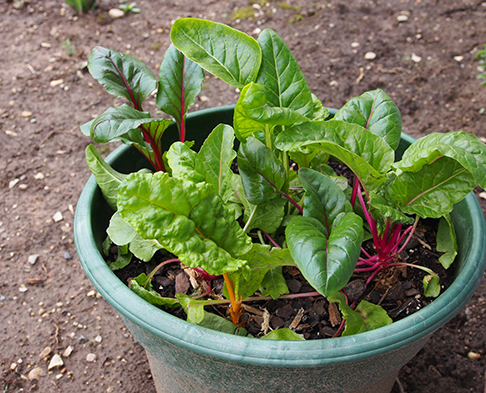Last summer, in an effort to thwart the many rabbits that inhabit our yard, I planted some Rainbow Swiss Chard in a large pot instead of in our usual garden. The chard came up and grew nicely and the rabbits didn’t seem to notice the plants at all. They grew so well that I was soon giving chard away and looking for new recipes to use up the excess. When autumn came the plants still looked good and I was reluctant to let them freeze and die. Since I normally have a few plants growing under lights in the basement, I decided to bring my pot of swiss chard inside intending to have greens growing in the basement for omelets and salads.
This plan actually worked very well except for one small problem. I accidentally brought in aphids with my chard and before I realized the problem, the aphids were multiplying. It took a few weeks of spraying the chard with soapy water before the aphids gave up and by that time some of my chard plants had died. Those that survived actually did pretty well in the basement, but only supplied enough for omelets, never enough for a whole salad.
When spring came, I moved the pot of chard outdoors in the shade and gradually backed them out into the sun. As you can see in the photo above, they readjusted to the weather nicely and in fact are growing faster now than they did all winter.
This year, I thought I would plant some new chard plants in the same pot among the existing plants along with some slow release fertilizer, and when they are doing well and ready to harvest, simply cut down and remove last year’s plants.
Research
Swiss chard is one of the world’s healthiest vegetables and ranks second only to spinach in total nutrition. It belongs to the chenopod family—including beets, chard, spinach, and quinoa—and continues to show an increasing number of health benefits not readily available from other food families. It is recommend that you include foods from the chenopod family in your diet 1-2 times per week




